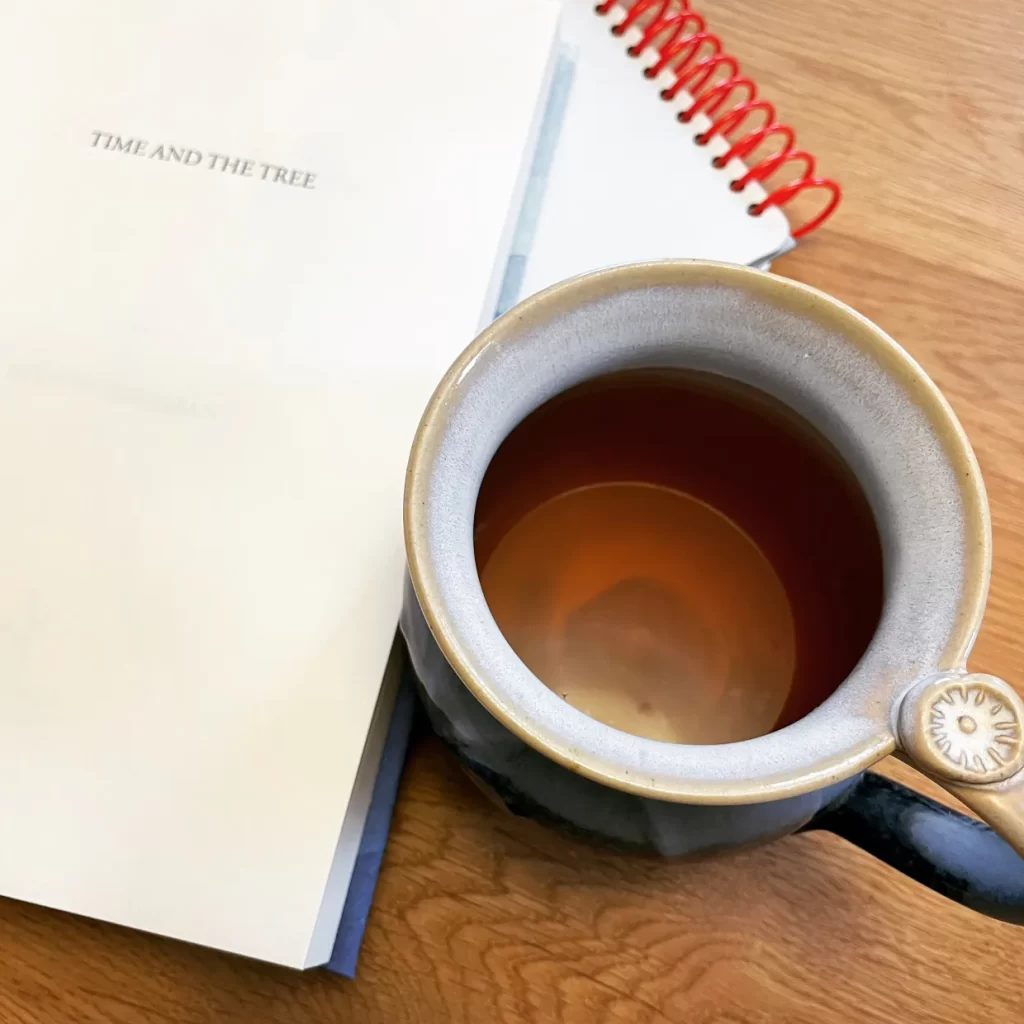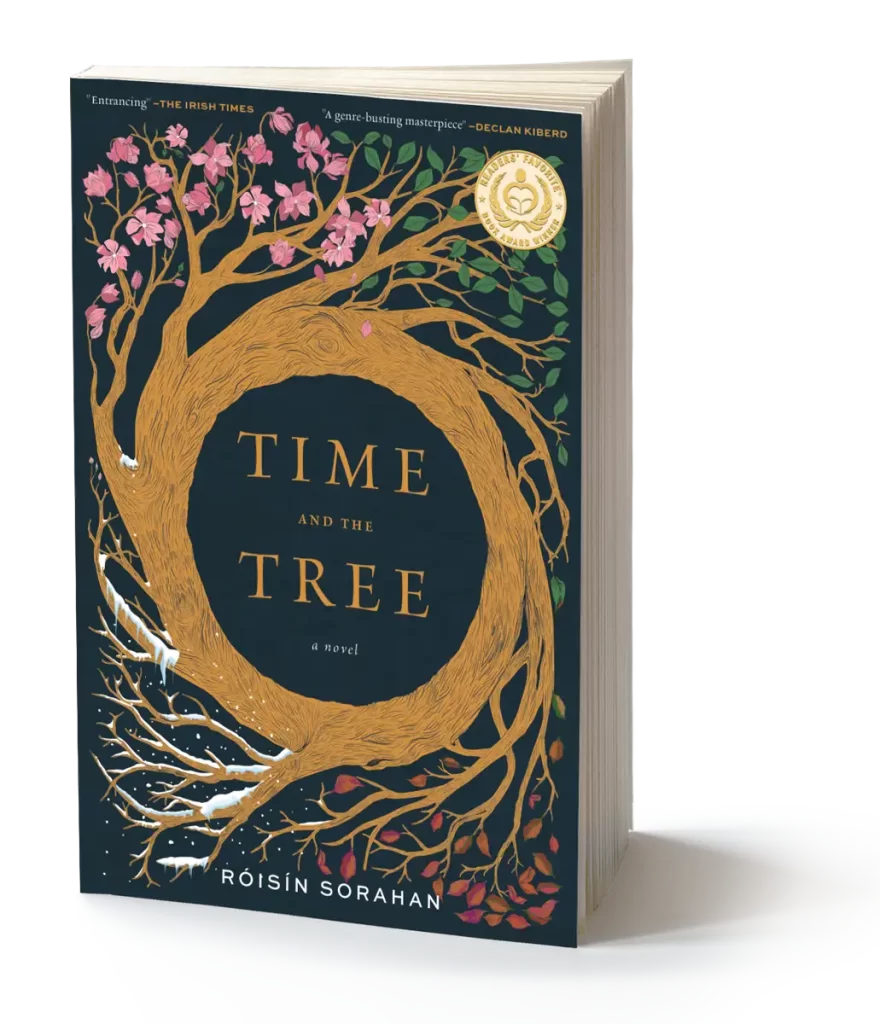In Conversation – Teddy Rose Interview


1 Feb. 2022
theteddyrosebookreviewsplusmore.com
TEDDY: Please tell us something about Time and the Tree that is not in the summary. (About the book, “character” you particularly enjoyed writing etc.)
RÓISÍN: Some books seem destined for their time.
Time and the Tree is hope, and pause, when the world feels dark, and the bedrock that has shaped us is trembling.
It’s the companion on the long road, who asks the hard questions and makes you raise the head and weigh your choices. It’s the same companion who listens carefully. Who probes the silences, as well as the words.
The one who doesn’t judge. But makes you think. And, possibly even wonder.
Time and the Tree reminds us of who we are, and what we have the potential to be.
Each reader will shape this book with their own reflections, memories, hopes, dreams and failures. The answers they find, and the choices they make, are theirs alone. This is an aspect of creation that I love: the completion of the work in the mind of the reader, so that it is personal to each who approaches it.
TEDDY: How long did it take you to write this book from concept to fruition?
RÓISÍN: I’m not really sure. It started as a nudge in the back of my mind. A conversation between a child and a tree, on the nature of time.
Then, a long time later, during a 10-day silent meditation retreat in India, it emerged fully formed. The shape, the characters, the structure, the stories all came together, almost unbidden.
After that, I wrote as I traveled, as I pleased. The first draft was mainly handwritten in notebooks. It was a joy. I looked out of the windows of busses on long, dusty rides, and I thought.
Then, it was revised, rewritten, reflected on, honed, and it was wholly other to publishing trends, that determine a book’s value in the marketplace.
However, I felt its worth was in the mind of the reader, and I eventually found a home for it. It was a long road, but it came into the world at this time. And that, I think, is important.
TEDDY: In ‘Time and the Tree’, life and relationships are pondered. Do you have a specific message you would like readers to come away with?
RÓISÍN: We are responsible for the paths we travel and the choices we make. Our capacity for fear and self-destruction is enormous. So too is our ability to change, to fail, to fail better, to love, to immerse ourselves in the moment. Our capacity for happiness is also boundless.
TEDDY: How did your life as an English teacher in China influence your writing of Time and the Tree?
RÓISÍN: When I first moved to China I lived in Henan province, which is in the centre of the country. It’s rural, remote, and about twenty years behind the wealth and opportunity enjoyed in cities such as Beijing and Dalian. Other than the handful of English teachers in our college, there were no foreigners, and no English was spoken outside of the campus.
It was the first time in my life that I was wholly locked out of a language. I spoke no Chinese when I arrived, and was completely illiterate, as all street signs, advertisements, and the like, were written in traditional Chinese characters, rather than the Romanised version of Chinese, called pinyin, which is often used in more modern urban centres.
As a result, I had to rely on non-verbal communication to get by. It challenged my sense of language, but ultimately reinforced my belief that words are the key to comprehension and insight into our lived and inner spaces.
I was also wholly dependent on the kindness of strangers to accomplish even the simplest of tasks. I made so many crass, and unwitting, errors. And I was forgiven, time and again. It was humbling and rewarding and an exercise in patience and compassion, two important themes in my book.
It was also deeply frustrating at times, and I had to work hard to maintain the equilibrium I had attained on the road. From the perspective of my writing, this was an important awareness and informed my exploration of happiness.
On a more prosaic level, it was a hiatus from traveling. After being in motion for so long, I now had a desk and a computer, and I had the time and physical workspace to put shape on the notebooks I had filled while waiting for buses to depart and trains to reach their destinations, as I wandered and wrote.
TEDDY: What inspired you to write?
RÓISÍN: I love words. They put manners on my thoughts when they’re unruly.
Words help me to understand the world, and my place in it. They give form to feeling, and they allow instinct to guide. For me, it’s as elemental as naming a thing into being.
TEDDY: How much time and effort went into writing Time and the Tree? Did you do any research for the book?
RÓISÍN: I live my life deliberately. I’m willing to take chances and embrace the fear of failure. I take responsibility for my decisions. Even the bad ones. And I both reflect inwardly, and on the world around me. This, I suppose, is a form of research for writing a book about time, and the importance of change, including death, as part of the cycle of renewal.
I also write about the philosophy of happiness, prioritising the self and making good choices that lead to inner peace and happiness.
And yes, it takes time and effort. Possibly a lifetime.
TEDDY: Where did you get the inspiration for your cover?
RÓISÍN: My publisher produced the artwork for the cover. I like it very much. It captures change simply and evocatively, and it speaks directly to the themes in my book. The colour palette also subtly conveys hope, and compassion, which are central tenets in Time and the Tree.
TEDDY: What is next for Róisín Sorahan? Do you have another book in mind or other project?
RÓISÍN: There’s always another project. I’m currently interested in the ‘invisible woman’ and, in that context, I’m researching the life, and imagining the inner world, of Suzanne Dechevaux-Dumesnil, Samuel Beckett’s partner and life-long supporter.
© Róisín Sorahan